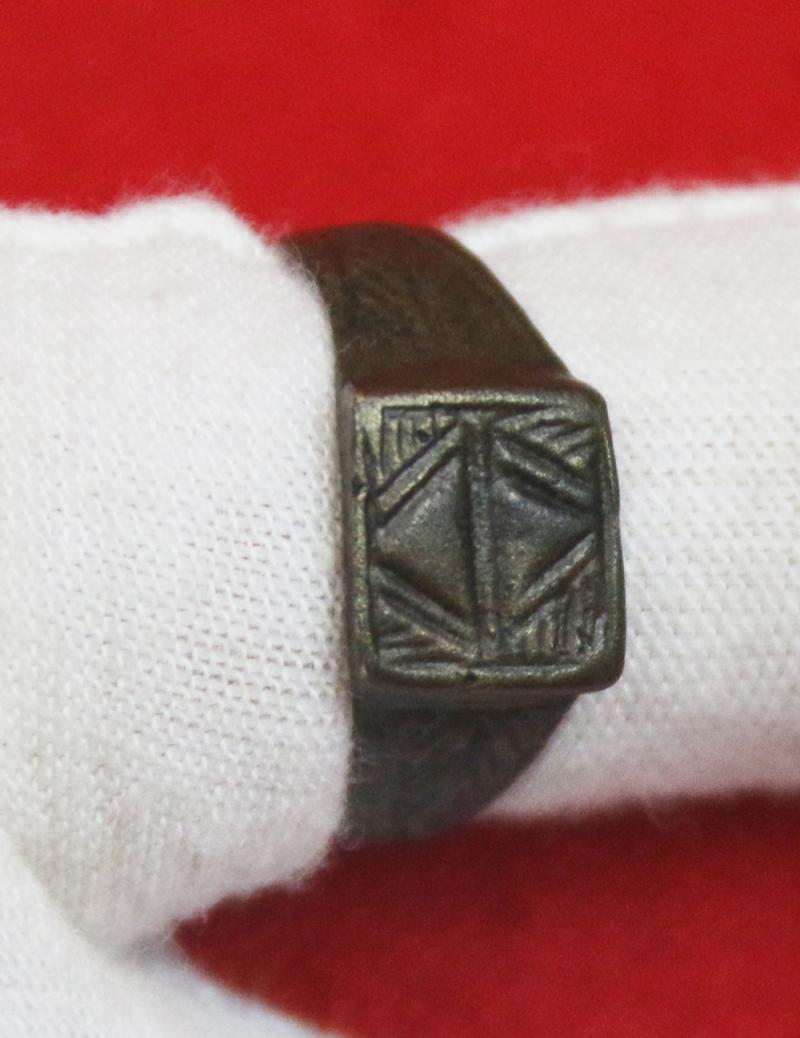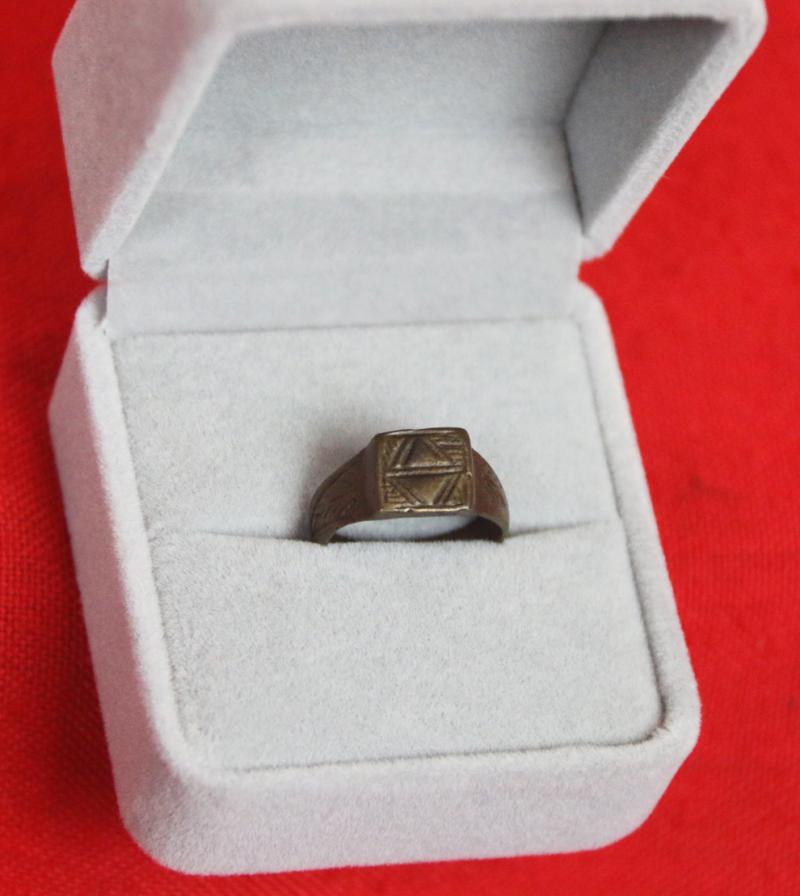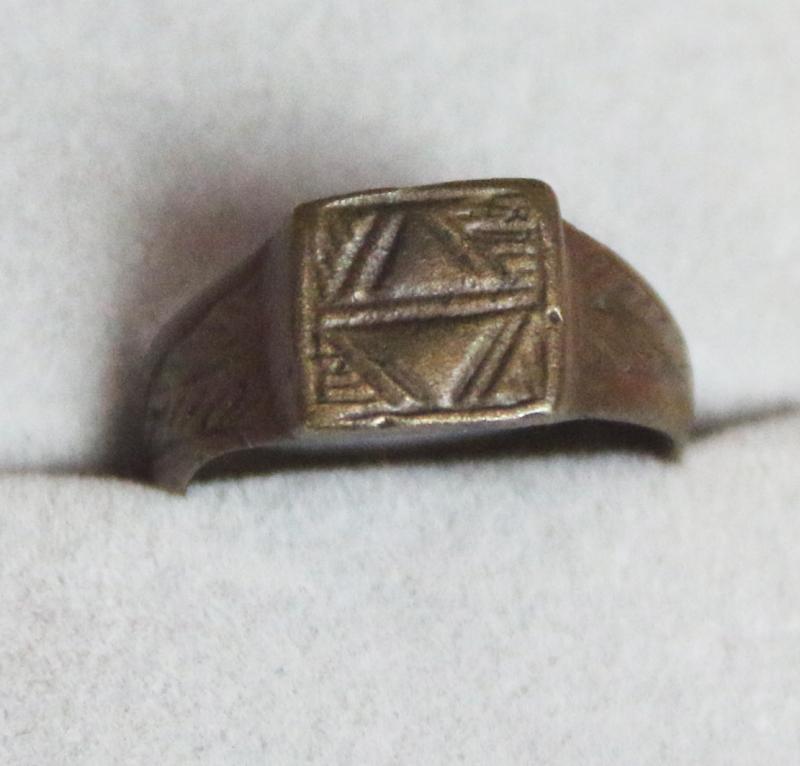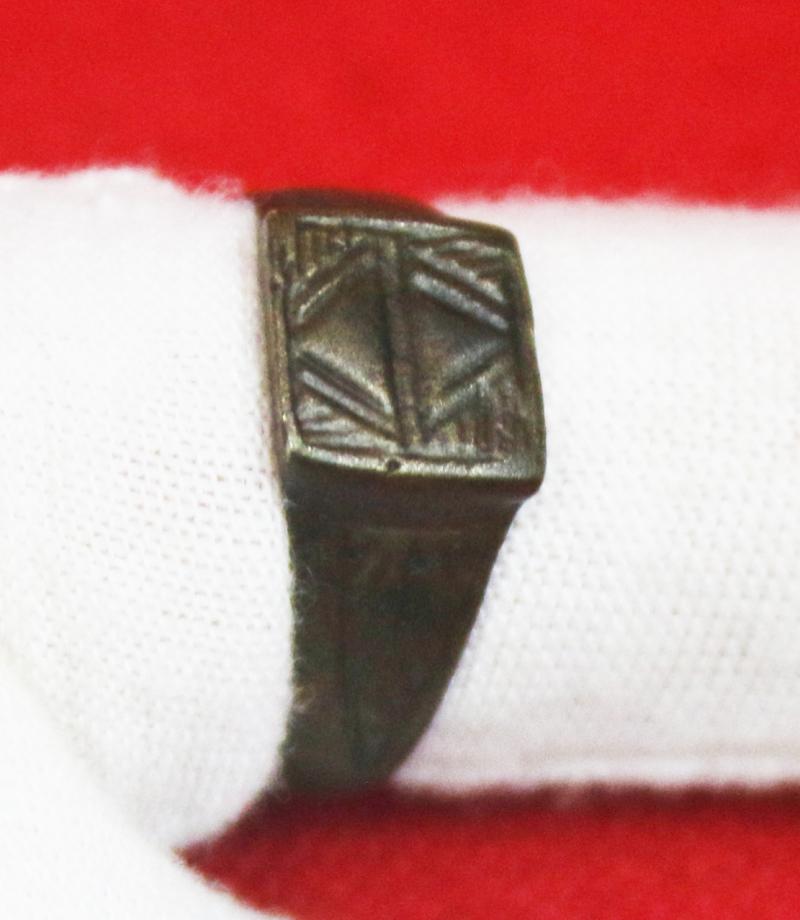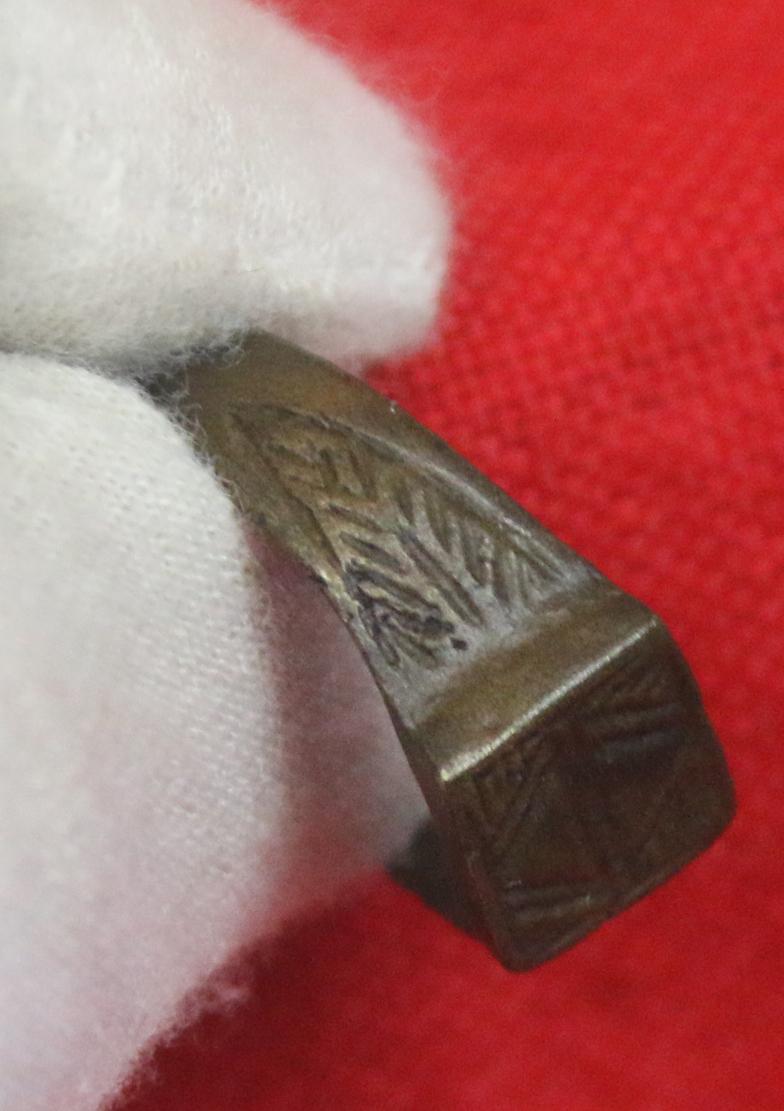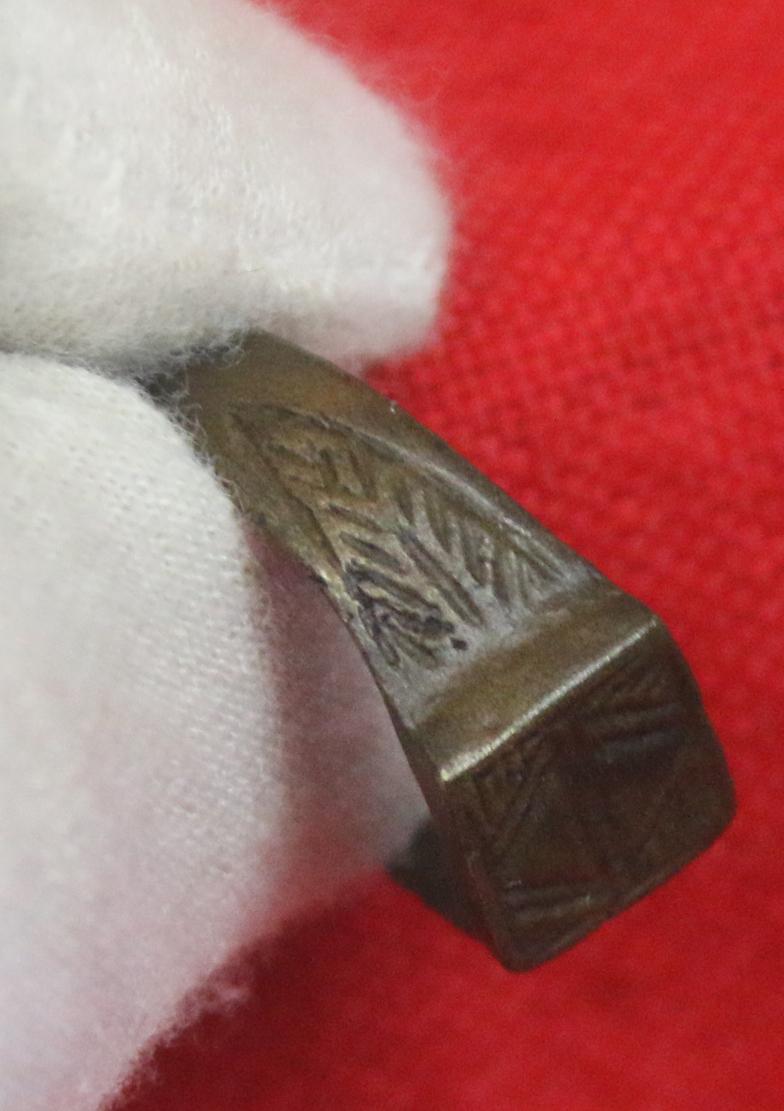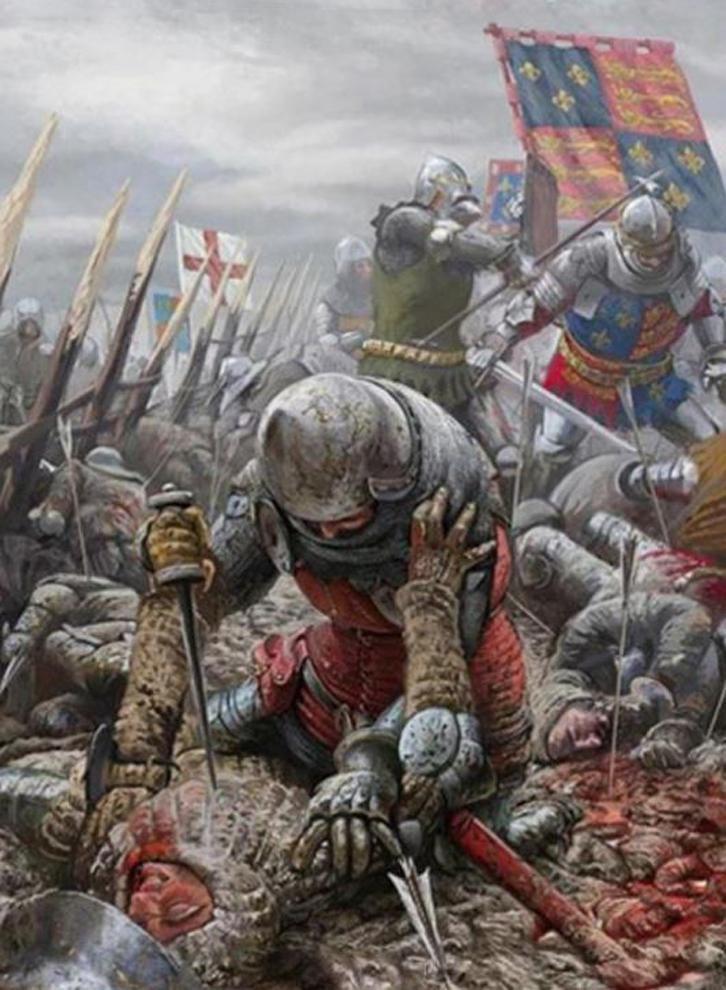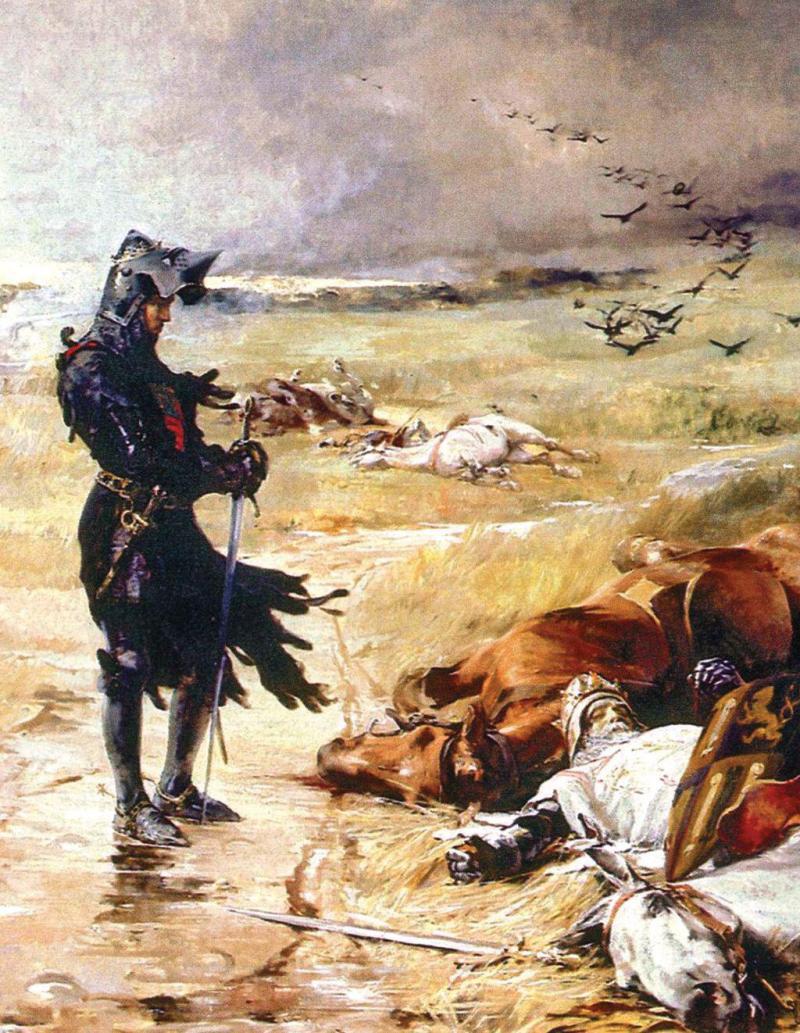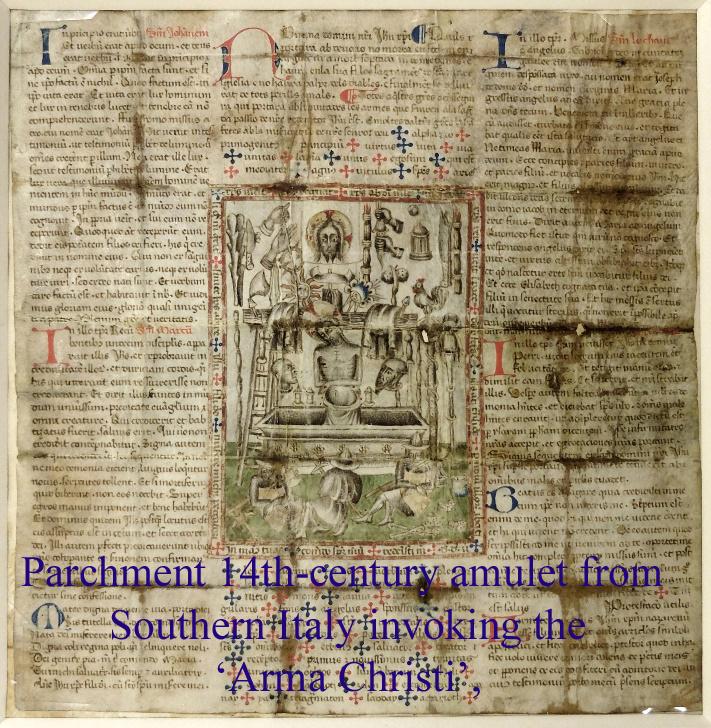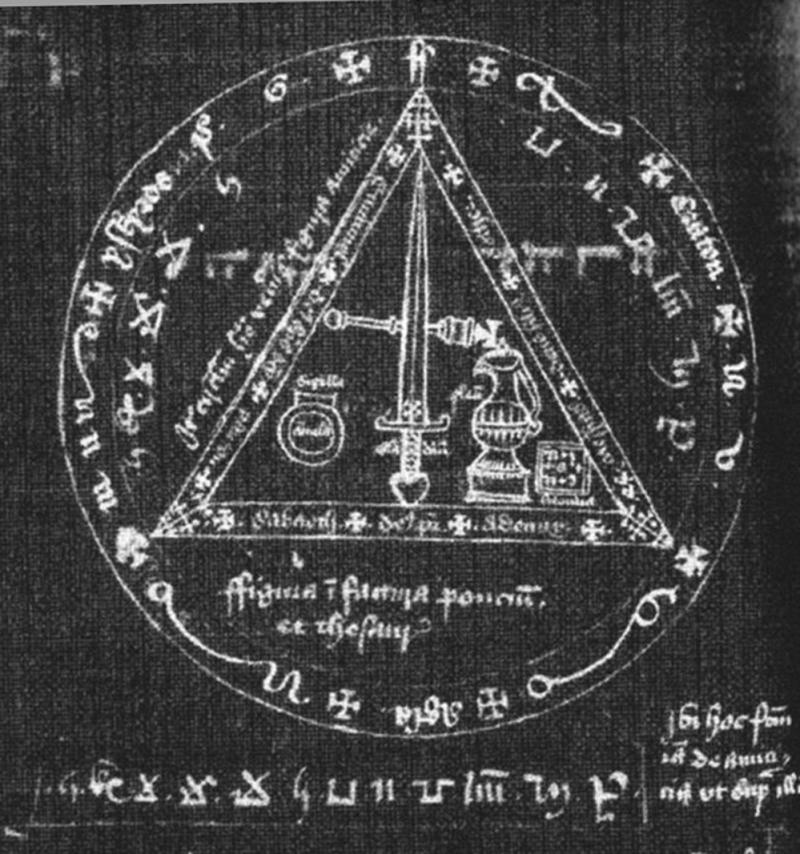A Wondrous & Incredibly Rare 14th Century Bronze Talismanic, Magical or Mystical Knights Ring. Grand Tour Recovery From Agincourt. Featuring Twin Triangles of the Holy Trinity & the World, the Flesh, and The Devil
Twin triangles, within larger twin triangles and four double triangle corners. The shoulders are engraved with palm tree fronds. Early Christians used the palm frond branch to symbolize the victory of the faithful over enemies of the soul. . The palm has been among all nations a symbol of victory: "What is signified by the palm," says St. Gregory the Great (Homily on Ezechiel 2:17), "except the reward of victory?" The primitive Church used it to express the triumph of the Christian over death through the resurrection.
This wonderful ring is very solid and sound, especially considering it is around 700 years old, and in fact still perfect to wear today, if desired. It bears a superb natural aged patina. When worn in its day, it would have shone like gold.
A talisman is any object ascribed with religious or magical powers intended to protect, heal, or harm individuals for whom they are made. Talismans are often portable objects carried on someone in a variety of ways, such as Talismanic rings or pendants, but can also be installed permanently in architecture. Talismans are closely linked with amulets, fulfilling many of the same roles, but a key difference is in their form and materiality, with talismans often taking the form of objects (e.g., clothing, weaponry, jewellery or parchment) which are inscribed with magic texts
The triangle with its apex up was typical of the Trinity, figures that occur in several religions. In India, China and Japan, its three angles represent Brahma, Vishnu, and Shiva, the Creator, Preserver, and Destroyer or Re-generator. In ancient Egypt, it represented the deities Osiris, Isis and Horus. In Christianity, it represented the Holy Trinity. As a whole it stands for the elements of fire and spirit, composed of the three virtues (love, truth, and wisdom). The triangle with its apex downward symbolized the element of water, and typified the material world, or the three enemies of the soul: the world, the flesh, and the Devil, and the cardinal sins, envy, hatred and malice. Therefore, the two triangles interlaced represent the victory of spirit over matter. The early cultures that contributed to Western civilization believed that the Seal of Solomon was an all-powerful talisman and amulet, especially when used with either a Cross of Tau, the Hebrew Yodh, or the Egyptian Crux Ansata in the centre.
Amulets may contain medieval manuscripts of folded texts for protection against demon forces {see photo 9 in the gallery}. Combined with a talismanic ring or pendant the wearer would feel their safety was assured from all elements, both physical and spiritual.
After several decades of relative peace, the English had renewed their war effort in 1415 amid the failure of negotiations with the French. In the ensuing campaign, many soldiers perished due to disease and the English numbers dwindled, but as they tried to withdraw to English-held Calais they found their path blocked by a considerably larger French army. Despite the disadvantage, the following battle ended in an overwhelming tactical victory for the English.
King Henry V of England led his troops into battle and participated in hand-to-hand fighting. The French king of the time, Charles VI, did not command the French army himself, as he suffered from severe psychotic illnesses with moderate mental incapacitation. Instead, the French were commanded by Constable Charles d'Albret and various prominent French noblemen of the Armagnac party.
This battle is notable for the use of the English longbow in very large numbers, with the English and Welsh archers forming up to 80 percent of Henry's army. The decimation of the French cavalry at their hands is regarded as an indicator of the decline of cavalry and the beginning of the dominance of ranged weapons on the battlefield.
Agincourt is one of England's most celebrated victories. The battle is the centrepiece of the play Henry V by Shakespeare. Juliet Barker in her book Agincourt: The King, the Campaign, the Battle ( published in 2005) argues the English and Welsh were outnumbered "at least four to one and possibly as much as six to one". She suggests figures of about 6,000 for the English and 36,000 for the French, based on the Gesta Henrici's figures of 5,000 archers and 900 men-at-arms for the English, and Jean de Wavrin's statement "that the French were six times more numerous than the English". The 2009 Encyclopædia Britannica uses the figures of about 6,000 for the English and 20,000 to 30,000 for the French. Part of an original medieval collection we have just acquired, of Viking and early British relics of warfare from ancient battle sites recovered up to 220 years ago.
Most of our antiquities and artefacts are from 200 year past souvenir accumulations from British ‘Grand Tours’. Beautiful Items and antiquities were oft acquired in the 18th and early 19th century by British noblemen and women touring battle sites in Northern France and Italy, in fact most of Europe and the Middle East, on their so-called ‘Grand Tour’. They were often placed on display upon their return home, within the family’s 'cabinet of curiosities', within their country house. Some significant British stately homes had entire galleries displaying the treasures and artefacts gathered and purchased on such tours, and some tours lasted many years, and the accumulated souvenirs numbered in their hundreds or even thousands. A popular pastime in the 18th and 19th century, comprised of English ladies and gentlemen traveling for many months, or even years, throughout classical Europe, and the Middle East, acquiring knowledge and education on the arts, and thus returning with antiquities and antiques as souvenirs for their private collections, and these travels have been thus called ‘Grand Tours’.
Picture 10 in the gallery of a magic circle containing the triangle in a 15th-century manuscript
size O {UK}
Every single item from The Lanes Armoury is accompanied by our unique Certificate of Authenticity. Part of our continued dedication to maintain the standards forged by us over the past 100 years of our family’s trading
Code: 25081

